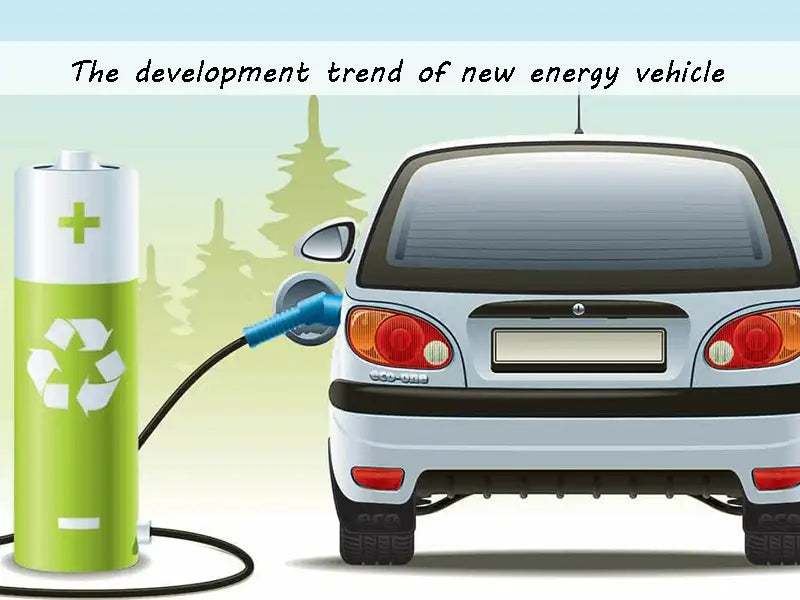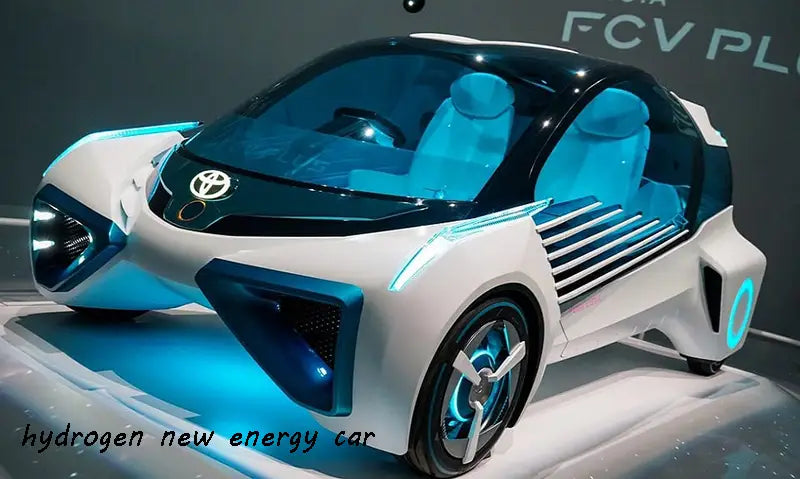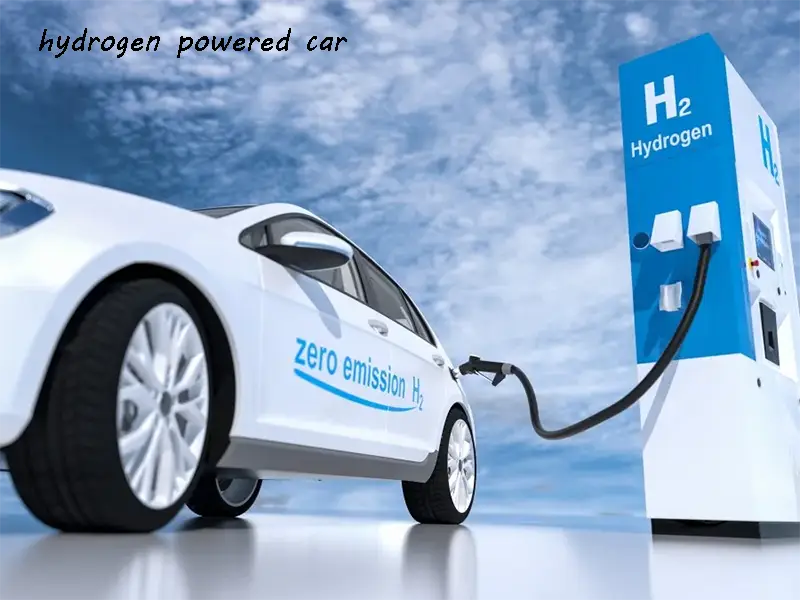
Main content:
New energy vehicles include electric new energy vehicles, hybrid fuel new energy vehicles, and fuel cell new energy vehicles. In the first half of the 21st century, advanced internal combustion engines and hybrid vehicles based on various liquid fuels and their infrastructure, gas and fuel cell vehicles based on various gas fuels and their infrastructure, and pure electric vehicles based on electricity and their infrastructure will will coexist for a long time. Among them, advanced internal combustion engines and hybrid vehicles will dominate, and the sum of gas and fuel cell vehicles and pure electric vehicles is expected to account for one-third, or even about half, of car sales by the middle of the 21st century.
Pure electric new energy vehicles, hybrid new energy vehicles and fuel cell new energy vehicles will be the main solutions to reduce emissions and resolve the oil shortage crisis, especially fuel cell new energy vehicles, because of their "zero emissions", "high efficiency" It has become one of the most ideal solutions due to its advantages such as "fuel diversification".
The main power of the fuel cell new energy vehicles are the proton exchange membrane fuel cell, and the auxiliary power is the lithium ion battery. Due to the problems of hydrogen production, storage and transportation have not been completely solved, coupled with the system complexity of hydrogen fuel cells, the difficulty of hydrogen infrastructure construction, the limited platinum resources and the high cost, the application in electric vehicles Obstacles and long periods of time. In comparison, hydrogen storage materials and supporting facilities for hydrogen-powered vehicles are still more difficult.
Hybrid technology may be further developed. This technology is called hybrid drive. In fact, it is the use of traditional energy, a mixture of electricity and oil, or fuel-based. The main power of the hybrid vehicle is the internal combustion engine, and the battery only recovers the energy when the vehicle decelerates, and cannot be charged externally. Hybrid vehicles have a certain positive significance for fuel saving and environmental protection at this stage, and are a transitional choice for the recent marketization.

Another new energy vehicles technology is pure electric vehicles, which use an external power supply to eliminate the traditional dependence on fuel. If a more durable battery can be developed in the next five years, it is likely that electric vehicles will win. However, electric vehicles still have a long way to go before they can completely replace gasoline/diesel vehicles. Other concepts, such as solar and wind-powered vehicles, are also being developed abroad.
It may only be a matter of time before new energy vehicles replace traditional fuel vehicles. New energy vehicles have started in various fields, from the advent of standard charging plugs, to the innovative design of electric motors and batteries, to the introduction of "car charging stations" construction plans, a brand new new energy vehicles industry chain has begun to emerge.
According to Pike Research's July 9, 2009 forecast for the clean technology market, 1.7 million plug-in hybrid electric vehicles will hit the road worldwide in 2015. Pike Research predicts that the U.S. will be the leading PHEV market, with more than 610,000 units sold over the next five years. China's electric vehicle production is growing strongly and will rank second in the world, with PHEV sales expected to exceed 540,000 units by 2015. Toyota, General Motors and Ford Motor Co. will together account for three-quarters of the world's PHEV market by 2015. However, in the longer term, some Chinese manufacturers, such as Chery and BYD Automobile Co., will have rapid development. Pike Research also predicts that China will become the world's leading country in car charging stations. Based on encouraging the development of electric vehicles, its charging stations will account for half of the entire market. The United States will be the second market, with more than 1 million charging stations by 2015. . Other countries with more EV charging infrastructure will include Israel and Denmark.

An epoch-making achievement was the introduction of a universal charging plug for electric vehicles. Volkswagen, GM, Mitsubishi and other major global automakers and power companies have reached a preliminary agreement on the standard for universal charging plugs for electric vehicles, and developed samples, which paved the way for the mass production of new energy electric vehicles. The unified 400V plug is very convenient. It may become an industry standard, so that the electric vehicles produced by various car manufacturers do not need adapters when charging, and the charging time is expected to be greatly shortened.
It should be pointed out that in order to promote the global popularization of electric new energy vehicles and hybrid fuel new energy vehicles, in addition to technological breakthroughs and standard unification, related infrastructure construction must also be carried out simultaneously. Create an efficient network of "car charging stations". The solution proposed by the German power equipment manufacturer Rittal is to popularize the car charging system in the parking lot, which can automatically monitor the remaining power of the battery and the required charging time.
The transformation of the way cars consume energy will play a decisive role in global energy conservation, and this transformation will largely depend on the renewable energy strategies implemented by various governments. The German government stated in April 2009 that by 2020, renewable energy will account for 47% of all energy consumption. Therefore, in 2020, the number of new energy vehicles in Germany will exceed 1 million, thus helping Germany achieve this goal. In early 2009, a large part of the 50 billion euro economic stimulus plan passed by the German government was used for electric vehicle research and development, "car charging station" network construction and renewable energy development. The British and French governments have also announced that they will provide certain subsidies to buyers of new energy vehicles in the future.
In general, new energy vehicles are under development and development, and whoever breaks through will master the future development trend.
1. New energy vehicles: hybrid vehicles (main force)

At present, there are more than 70 types of fuel cell new energy vehicles in the world, and the most popular and most sold new energy vehicles abroad are hybrid vehicles. In 1997, the first mass-produced hybrid new energy vehicles, the Prius, was introduced to the Japanese market, and 18,000 units were sold that year. In 1999, the Honda hybrid two-door Insight, launched in the United States, was well received. At the end of 2007, the statistics of Autodata, an authoritative organization in the United States, showed that in October 2007, the sales volume of hybrid vehicles in the United States increased by 30% year-on-year, and the sales volume was 14,443. Hybrid models have even become a bright spot in the flat U.S. auto market: In 2007, more than 300,000 hybrids were sold in the U.S. market. On May 17, 2007, the cumulative global sales of Toyota hybrid vehicles exceeded 1 million.
2. New energy vehicles: hydrogen-powered vehicles (the ultimate goal)

Hydrogen-powered new energy vehicles are recognized by the automotive industry as the "ultimate goal" of the most promising new energy vehicles. They have high energy density and emit only completely harmless water. In addition to their high cost and price, they are almost the most promising vehicles for traditional energy vehicles. Ideal replacement. However, its technical and cost problems need to be overcome. Before the mass production of hydrogen-powered new energy vehicles, hybrid vehicles and electric vehicles became the most concerned new energy vehicles.
3. New energy vehicles: Japanese car companies (leader)
When European and American countries focus on hydrogen power, or realistically improve traditional engine technology, the achievements of Japanese car companies in hybrid power make them the leader of new energy. The industry generally believes that the use of power is the ideal goal of automobile development, and hybrid power is considered to be the best transition product at present. Toyota and Honda have made great achievements in this field, not only gaining commercial interests, but also winning the reputation of environmental protection and energy saving. .
Statistics show that in April 2008, the sales of new energy vehicles in the United States increased by 46% compared with the same period in 2007, and the sales volume reached 39,900, which made the market share of new energy vehicles exceeded 3% for the first time, reaching 3.2%. That figure doesn't include sales of new-energy vehicles that GM doesn't disclose. The Ford Motor Company of the United States believes that the future of the American auto industry depends on advanced hybrid and battery technology. The governments of Japan, China, South Korea, India and other countries are vigorously developing plug-in hybrid vehicles.
Read more: Development Trend of Alternative Fuel